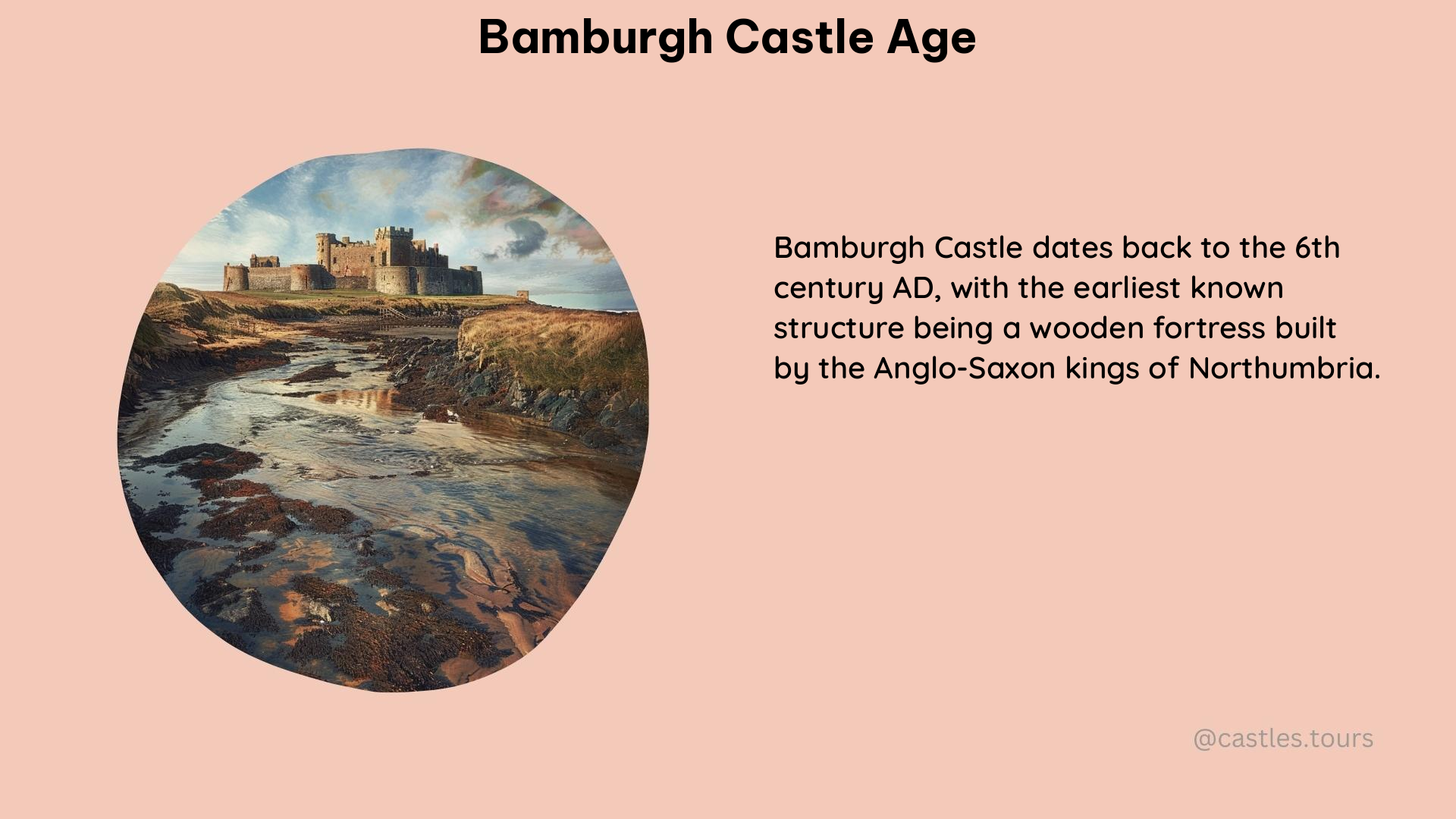Bamburgh Castle, located in the picturesque village of Bamburgh, England, is a true gem of British history. This iconic fortress has stood tall for over 1,400 years, with the oldest surviving aboveground parts dating back to the 12th century. The castle’s rich and captivating history is a testament to its enduring significance and the fascinating story it has to tell.
The Ancient Roots of Bamburgh Castle
The site of Bamburgh Castle has been occupied since ancient times, with evidence of prehistoric and Roman settlements. The castle was built upon a basalt crag, a natural defensive position that had been fortified long before the arrival of the Normans. The earliest written record of the castle dates back to AD 547, when it was captured by the Anglo-Saxon ruler Ida of Bernicia.
The Northumbrian Kings and the Viking Invasion

Bamburgh Castle was a royal palace where many of the Northumbrian kings were crowned. It served as a symbol of power and authority for the region’s rulers. However, the castle’s prominence was not without its challenges. In 993, the castle was sacked by the Vikings, a testament to the turbulent times that shaped its history.
The Norman Conquest and the Siege of 1095
The Normans eventually took control of Bamburgh Castle, and it was rebuilt and fortified to withstand the test of time. In 1095, the castle successfully withstood a siege by William II, further solidifying its strategic importance.
The Architectural Evolution of Bamburgh Castle
The oldest aboveground parts of Bamburgh Castle date from the 12th century, during the reign of Henry II. The principal surviving structure is the keep, which was completed in 1164. Over the centuries, the castle has undergone various renovations and restorations, adapting to the changing needs and architectural styles of the time.
The Abandonment and Restoration of Bamburgh Castle
In the 16th and 17th centuries, Bamburgh Castle fell into a state of neglect and was largely abandoned. However, in 1704, the castle was purchased by the Bishop of Durham, Lord Crewe, who oversaw the restoration and repurposing of the site. In the 1750s, significant parts of the castle were rebuilt and restored, giving it a new lease on life.
The Armstrong Era and the Castle’s Modern Transformation
In 1894, Bamburgh Castle was acquired by William Armstrong, an engineer, inventor, and armaments magnate. Armstrong transformed the castle into a unique blend of medieval fortress and Victorian mansion, further enhancing its architectural and historical significance.
Visiting Bamburgh Castle Today
Today, Bamburgh Castle is owned by the Armstrong family and is open to the public. Visitors can explore the castle’s impressive interiors, admire the stunning coastal views, and immerse themselves in the rich history that permeates every corner of this iconic fortress.
Conclusion
Bamburgh Castle’s age and enduring legacy make it a truly remarkable destination for history enthusiasts and castle lovers alike. From its ancient roots to its Norman conquest, Viking invasions, and Victorian-era renovations, this iconic fortress has witnessed the ebb and flow of British history. By exploring Bamburgh Castle, visitors can step back in time and uncover the captivating story of one of England’s most iconic landmarks.
